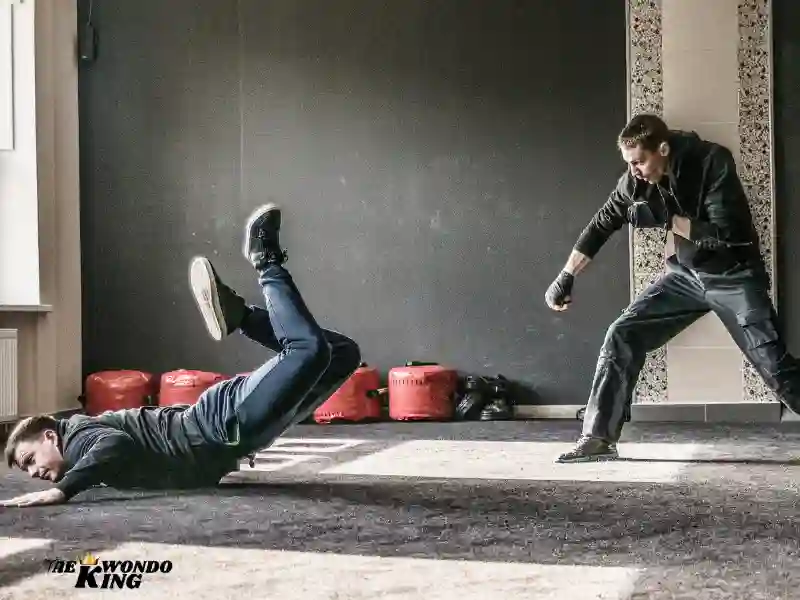
I still remember walking into a small dojo in Chicago where an old instructor once told me, “The most dangerous martial arts aren’t about violence, they’re about control.” That line stuck with me because it showed how power and discipline go hand in hand. After years of training and researching combat systems from around the world, I’ve come to see how some styles stand out for their sheer intensity and effectiveness.
In this guide, I’ll walk you through the Top 10 Dangerous Martial Arts, explaining what makes each unique, powerful, and sometimes feared. You’ll get a mix of history, real-life application, and lessons I’ve learned along the way. Stick around, by the end, you might discover the one style that speaks to your body, your spirit, and maybe even your survival instincts.
See the latest Top-Rated Adjustable Dumbbells Set Price Today Used by Champions.

List of the Top 10 Dangerous Martial Arts in The World
Martial arts, with their diverse techniques and philosophies, range from disciplined self-defense systems to powerful combat forms. Martial arts have been around for centuries, and there are many different forms and styles. In this article, we unveil the top 10 most dangerous martial arts in the world, exploring their lethal techniques, historical significance, and global impact. These styles all require intense physical and mental commitment, so it is important to choose one that suits your individual needs and preferences.
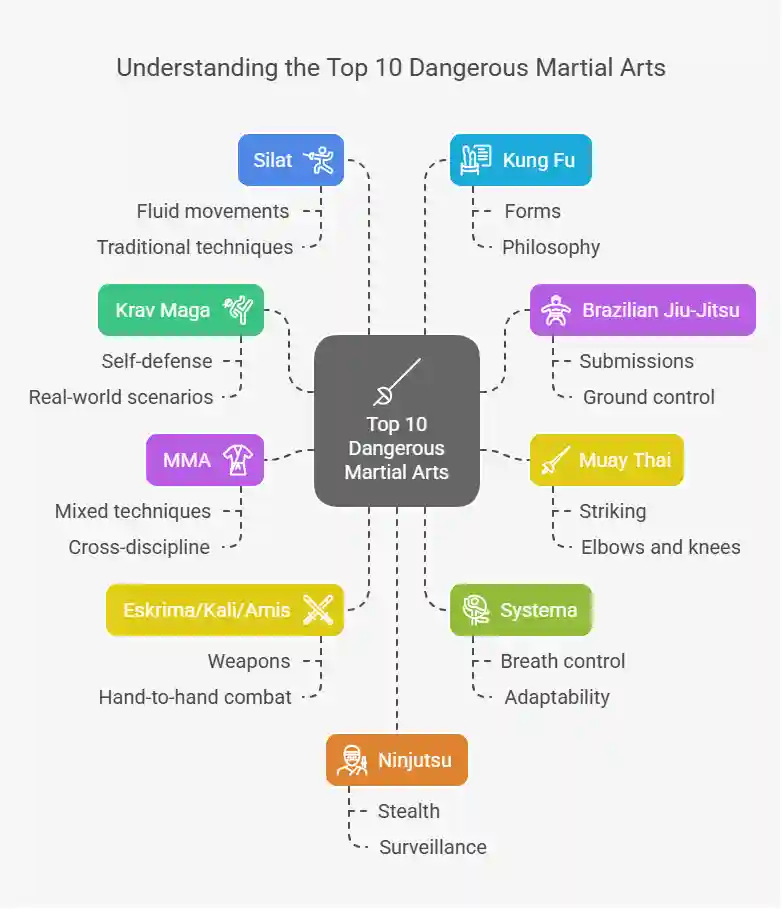
- Krav Maga
- Brazilian Jiu-Jitsu (BJJ)
- Muay Thai
- MMA
- Eskrima/Kali/Arnis
- Systema
- Silat
- Kung Fu (Various Styles)
- Ninjutsu
- Sambo
10. Sambo
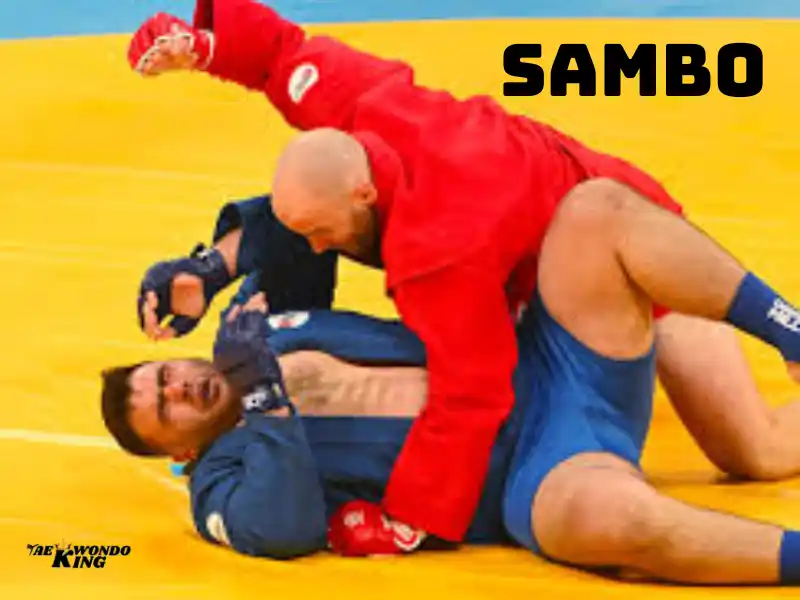
Sambo: A Glimpse into the Russian Martial Art Phenomenon
Sambo, a powerful and versatile Russian martial art, has garnered global recognition for its effectiveness in combat situations. Developed in the early 1920s by the Soviet Red Army, Sambo, which is an acronym for “SAMozashchita Bez Oruzhiya” or “self-defense without weapons,” seamlessly blends elements of judo and wrestling. Its rich history and evolution have contributed to its reputation as a formidable and dangerous martial art.
Exploring the Historical Tapestry of Sambo
The history of Sambo is deeply intertwined with the socio-political landscape of the Soviet Union. Created by Vasili Oshchepkov and Viktor Spiridonov, it was initially intended for the military and law enforcement. Over the years, Sambo evolved into a sport and a comprehensive martial art. The official recognition of Sambo by the International Olympic Committee further solidified its place on the global stage. The art’s historical journey reflects its adaptability, transitioning from a military self-defense system to a competitive sport practiced worldwide.
Why Sambo Reigns as the Most Dangerous Martial Art Worldwide
Sambo’s reputation as the most dangerous martial art is rooted in its practical and efficient techniques. Combining throws, ground control, and submissions, Sambo excels in both stand-up and ground combat. What sets Sambo apart is its adaptability; practitioners seamlessly integrate striking and grappling, ensuring versatility in any confrontation.
The art’s emphasis on real-world applicability and its historical connection to military training contribute to its dangerous nature. Sambo stands as a testament to the effectiveness of Russian martial arts, leaving an indelible mark on the global martial arts landscape.
See the latest Top-Rated Adjustable Dumbbells Set Price Today Used by Champions.

9. Ninjutsu
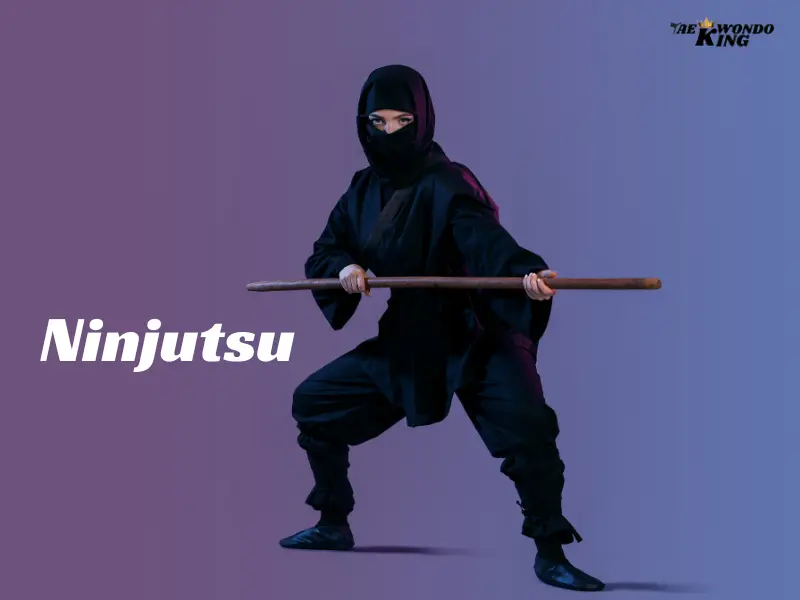
Ninjutsu: Unveiling the Secrets of the Silent Warriors
Ninjutsu, often associated with the legendary Japanese warriors known as ninjas, is a martial art shrouded in mystery and intrigue. Originating in feudal Japan, Ninjutsu encompasses a wide range of skills, including espionage, stealth, and unconventional warfare. The art’s foundation lies in adapting to the shadows, employing strategies designed for survival and effective engagement. With techniques that include unarmed combat, weaponry, and the art of disguise, Ninjutsu stands as a unique and versatile martial art with a rich history.
A Journey Through the Stealthy Pages of Ninjutsu History
The history of Ninjutsu traces its roots to the ancient Japanese clans, where skilled practitioners, known as shinobi or ninja, utilized their expertise for espionage and covert missions. Developed over centuries, Ninjutsu evolved alongside the changing landscapes of Japan. The art’s clandestine nature meant that much of its history was intentionally veiled in secrecy. Modern practitioners strive to preserve the ancient traditions, ensuring that the legacy of Ninjutsu endures through rigorous training and dedication to the art’s historical principles.
Why Ninjutsu Stands as the Epitome of Dangerous Martial Arts
Ninjutsu’s reputation as one of the most dangerous martial arts in the world is founded on its clandestine nature and lethal techniques. The art prioritizes adaptability, emphasizing strategies for both physical and psychological warfare. With a focus on unconventional methods, including the use of specialized weapons and covert tactics, Ninjutsu practitioners are equipped to navigate diverse combat scenarios. The art’s historical association with espionage and its mysterious allure contribute to its dangerous mystique, making Ninjutsu a revered and formidable martial art.
8. Kung Fu (Various Styles):
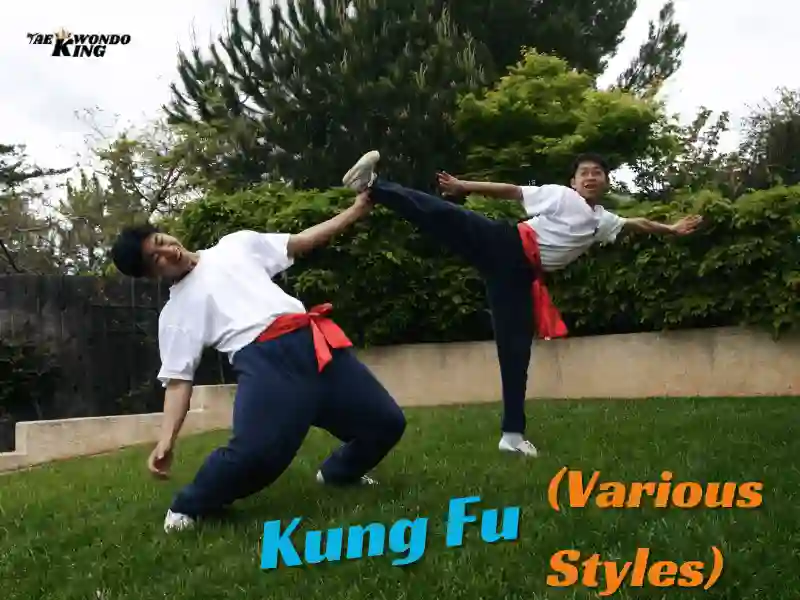
Kung Fu (Various Styles): The Harmonious Symphony of Chinese Martial Arts
Kung Fu, an umbrella term encompassing a diverse array of Chinese martial arts styles, is a cultural treasure that has captivated practitioners and enthusiasts worldwide. From the fluid movements of Tai Chi to the explosive strikes of Wing Chun, each style under the vast Kung Fu umbrella reflects a unique philosophy, history, and set of techniques. The term “Kung Fu” itself translates to “skill achieved through hard work,” reflecting the discipline and dedication required to master these martial arts.
Embarking on a Journey Through Kung Fu (Various Styles) History
The history of Kung Fu is as rich and varied as the styles it comprises. Originating in ancient China, Kung Fu has deep roots in the country’s history, evolving over centuries within monasteries, military training grounds, and the hearts of dedicated practitioners. The philosophy of Kung Fu is intertwined with Chinese culture, encompassing principles such as balance, harmony, and the pursuit of both physical and mental excellence. The transmission of Kung Fu knowledge often occurred through oral tradition and secret teachings, contributing to the mystique and allure surrounding its historical narrative.
Why Kung Fu (Various Styles) Stands as a Pinnacle of Dangerous Martial Arts
Kung Fu (Various Styles) has earned its reputation as one of the most dangerous martial arts in the world through a combination of powerful striking techniques, intricate forms, and a holistic approach to combat. Styles like Shaolin Kung Fu emphasize rigorous physical conditioning and acrobatic maneuvers, while others like Hung Gar focus on solid stances and devastating hand techniques.
The inherent versatility of Kung Fu styles, which often include both armed and unarmed combat techniques, provides practitioners with a comprehensive toolkit for self-defense. The fusion of physical prowess, mental discipline, and a deep connection to Chinese cultural heritage solidifies Kung Fu (Various Styles) as a dynamic and dangerous martial art admired for its beauty, complexity, and effectiveness in combat.
7. Silat
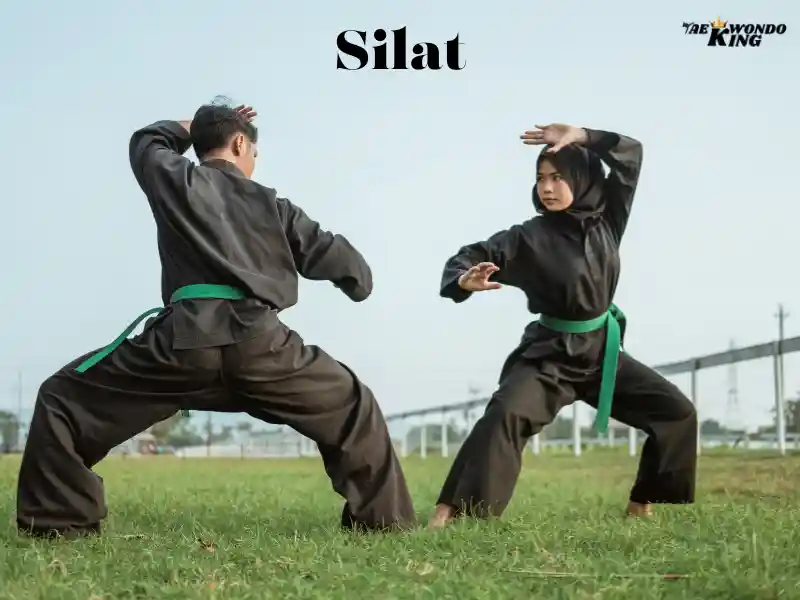
Silat: The Fluid and Lethal Martial Art of Southeast Asia
Silat, a traditional martial art hailing from the Malay Archipelago and Southeast Asia, is revered for its fluidity, intricate movements, and lethal effectiveness. Characterized by its emphasis on circular motions, joint locks, and strikes, Silat encompasses a diverse range of styles, each with its unique techniques and cultural influences. The term “Silat” is a collective label for indigenous martial arts practiced across countries like Indonesia, Malaysia, Singapore, and the Philippines, showcasing the region’s rich cultural diversity.
Delving into the Enigmatic Tapestry of Silat History
The history of Silat is deeply woven into the fabric of Southeast Asian cultures, dating back centuries. Originating from the Malay word “seni,” meaning art, Silat embodies a harmonious blend of combat techniques and cultural expression. Rooted in folklore and historical narratives, Silat often played a crucial role in warfare and served as a means of self-defense for communities. The art’s evolution is closely tied to the region’s diverse ethnic groups, resulting in a myriad of styles that showcase the unique flavors of each cultural context.
Why Silat Reigns as a Dangerous Martial Art Worldwide
Silat’s reputation as one of the most dangerous martial arts globally rests on its practicality, adaptability, and efficiency in combat situations. The art’s emphasis on close-quarters combat, quick strikes, and utilization of the opponent’s energy contributes to its lethal effectiveness. Silat incorporates an array of techniques, including sweeps, throws, and joint manipulations, making it a versatile system suitable for various self-defense scenarios. The art’s ability to seamlessly integrate striking, grappling, and weaponry sets it apart, earning Silat a well-deserved place among the world’s most formidable martial arts.
6. Systema
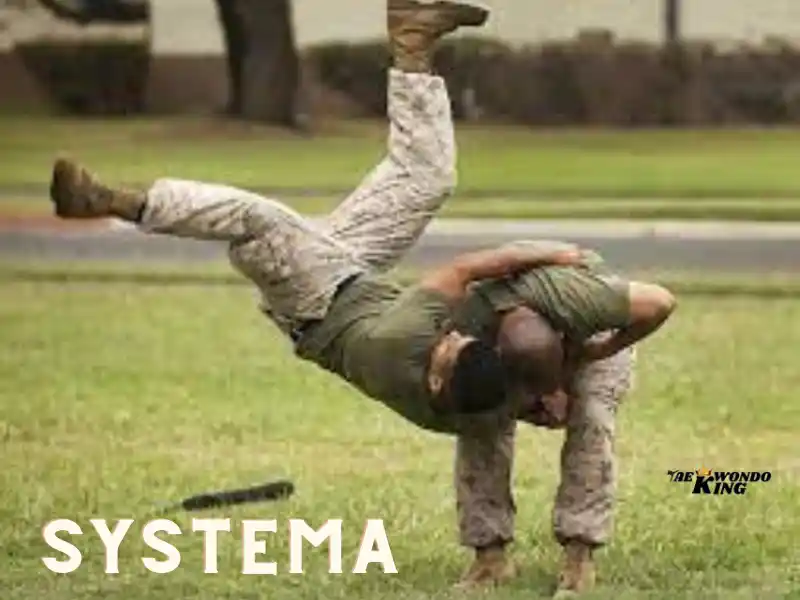
Systema: The Russian Martial Art – Precision, Fluidity, and Practicality
Systema, a unique and versatile Russian martial art, has gained international acclaim for its emphasis on adaptability, fluidity, and practical self-defense techniques. Rooted in the country’s historical military traditions, Systema encompasses a holistic approach to combat, incorporating striking, grappling, and defense against armed assailants. The term “Systema” translates to “the system” in Russian, encapsulating the art’s comprehensive and systematic approach to personal protection and hand-to-hand combat.
Tracing the Origins of Systema Through Russian Martial History
The history of Systema is deeply embedded in the martial traditions of Russia, with roots extending to various military and paramilitary organizations. Originating from ancient Slavic combat techniques, Systema evolved as a response to the challenging landscapes and diverse threats faced by Russian warriors. It gained prominence within elite military units, where its adaptability to unpredictable scenarios and its focus on maintaining composure under stress proved invaluable. Over time, Systema transitioned into civilian practice, allowing its principles to be shared and adapted for self-defense among a broader audience.
Systema’s Position as a Formidable and Dangerous Martial Art Worldwide
Systema is one of the most dangerous martial arts globally due to its emphasis on simplicity, spontaneity, and integrating natural movements. Practitioners of Systema are trained to respond intuitively to threats, utilizing techniques that are both efficient and unpredictable. The art’s focus on breath control, relaxation, and awareness contributes to its effectiveness in real-world situations. Systema’s approach to handling armed encounters, disarming opponents, and its emphasis on psychological aspects of combat further solidify its reputation as a dangerous and practical martial art that has transcended its military origins.
See the latest Top-Rated Adjustable Dumbbells Set Price Today Used by Champions.

5. Eskrima/Kali/Arnis
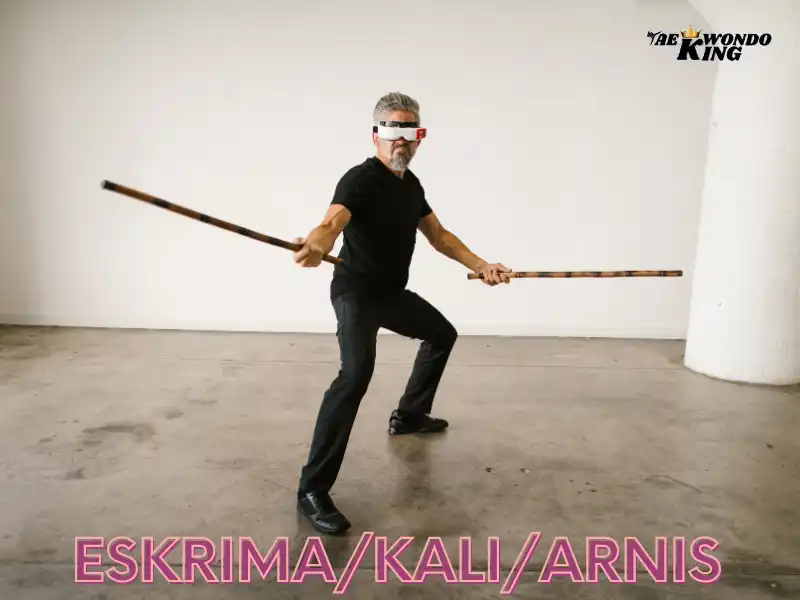
Eskrima/Kali/Arnis: The Dynamic Filipino Martial Arts Triad
Eskrima, Kali, and Arnis, collectively known as the Filipino martial arts, represent a dynamic triad of combat systems originating from the Philippines. Characterized by their emphasis on weapon-based techniques using sticks, knives, and other bladed objects, these arts are revered for their efficiency and adaptability. The interchangeable use of terms reflects the cultural diversity of the Philippines, where each region has contributed distinct elements to these martial arts, creating a harmonious blend of practical self-defense techniques.
Exploring the Rich Tapestry of Eskrima/Kali/Arnis History
The history of Eskrima/Kali/Arnis is deeply woven into the fabric of Filipino culture, reflecting centuries of inter-island interactions and the need for effective self-defense in a diverse archipelago. These martial arts have evolved, with influences from indigenous practices, colonial encounters, and resistance movements against foreign invaders.
Historical records suggest that Eskrima/Kali/Arnis traces its roots to ancient combat systems, further refined through generations of practitioners passing down their knowledge within familial and community settings. The adaptability of these arts allowed them to thrive despite periods of suppression during various colonial regimes.
Why Eskrima/Kali/Arnis Stands as a Pinnacle of Dangerous Martial Arts
Eskrima/Kali/Arnis holds a well-deserved reputation as one of the most dangerous martial arts globally, primarily due to its focus on practicality and weaponry. The arts’ foundation in using everyday objects as effective weapons makes them applicable to real-world self-defense scenarios. The emphasis on fluidity, and economy of motion.
The ability to seamlessly transition between armed and unarmed combat contributes to the effectiveness of Eskrima/Kali/Arnis. Practitioners are trained to disarm opponents swiftly, showcasing the arts’ adaptability to unpredictable situations. Eskrima/Kali/Arnis is a testament to the Filipino people’s resilience and resourcefulness, solidifying its status as a formidable and dangerous martial art on the global stage.
4. MMA
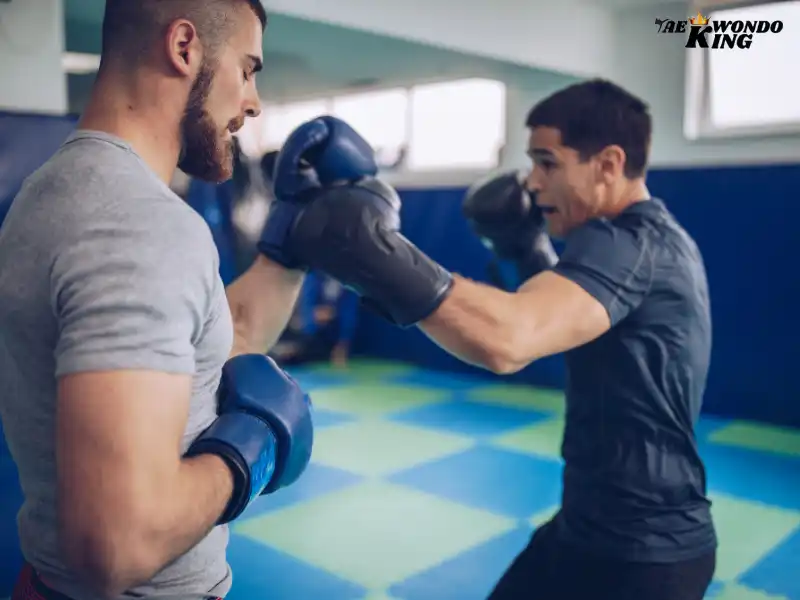
MMA: The Unmatched Fusion of Combat Disciplines
Mixed Martial Arts (MMA) has risen to global prominence as a dynamic and versatile combat sport that seamlessly blends various martial disciplines. Rooted in the ancient concept of pankration and later popularized by the Gracie family through the creation of the Ultimate Fighting Championship (UFC), MMA has evolved into a sport that showcases the effectiveness of combining striking and grappling techniques. The term “mixed” signifies the integration of diverse martial arts styles, such as Brazilian Jiu-Jitsu, Muay Thai, boxing, wrestling, and more, creating a comprehensive and adaptable approach to combat.
Tracing the Evolution of MMA Through its Storied History
MMA’s history is a fascinating journey that spans centuries, marked by the exploration of hand-to-hand combat in different cultures. However, modern MMA as we know it began to take shape in the early 1990s with the advent of the UFC. The tournament-style competitions of the early UFC events demonstrated the need for a well-rounded skill set, leading to the evolution of fighters who cross-trained in various martial arts. Over time, regulatory changes, increased safety measures, and a growing fan base transformed MMA into a mainstream sport, attracting top athletes from around the world and solidifying its status as the pinnacle of mixed martial arts competition.
Why MMA Stands at the Apex of Dangerous Martial Arts Worldwide
MMA is rightfully regarded as one of the most dangerous martial arts globally due to its focus on practicality and real-world effectiveness. Fighters are trained to adapt to different fighting styles, combining striking, clinch work, and ground fighting seamlessly. The absence of strict stylistic boundaries allows MMA practitioners to utilize the most effective techniques from different martial arts traditions. The sport’s continuous evolution, emphasis on athleticism, and the demand for well-rounded skills make MMA a dangerous and thrilling spectacle that showcases the pinnacle of combat sports on a global scale.
3. Muay Thai
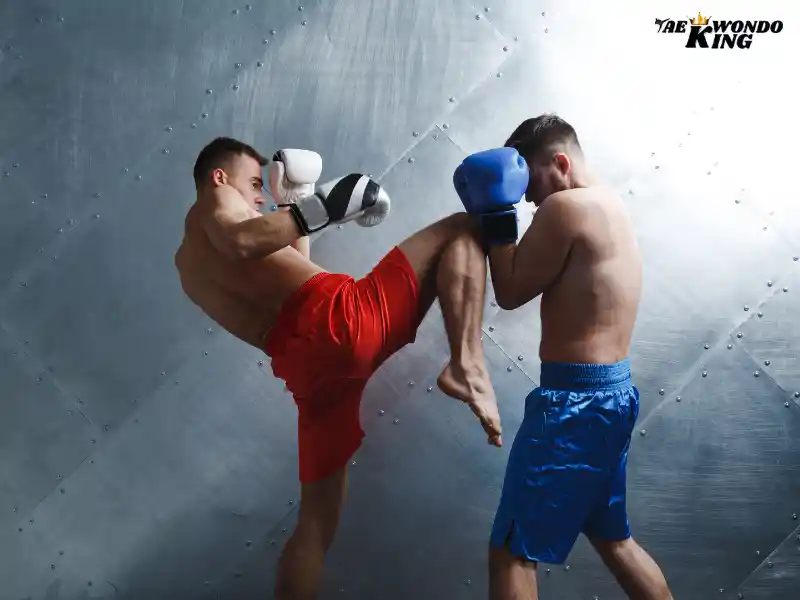
Muay Thai: The Art of Eight Limbs – Graceful, Powerful, Lethal
Muay Thai often hailed as the “Art of Eight Limbs,” stands as a strikingly dynamic martial art originating from Thailand. Renowned for its powerful and precise techniques, Muay Thai practitioners utilize fists, elbows, knees, and shins to deliver devastating strikes. The sport’s emphasis on fluidity and the seamless integration of offensive and defensive maneuvers make it a formidable and highly effective combat art. The name “Muay Thai” translates to “Thai Boxing,” reflecting the deep cultural roots and centuries-old traditions embedded in this martial art.
Embarking on the Journey Through Muay Thai’s Storied History
Muay Thai’s rich history is deeply entwined with the evolution of the Thai people and their martial traditions. Dating back to ancient battlefields, Muay Thai was developed to equip warriors with efficient and lethal techniques for hand-to-hand combat. Over time, the art transitioned into a revered national sport, celebrated through festivals and competitions across Thailand. The historical development of Muay Thai has been shaped by cultural influences, including military training, religious practices, and regional variations, creating a martial art that uniquely encapsulates the spirit and heritage of Thailand.
Why Muay Thai Reigns as a Dangerous Martial Art Worldwide
Muay Thai’s status as one of the most dangerous martial arts globally stems from its straightforward, yet devastating, techniques. Practitioners undergo rigorous training to master the art’s signature strikes, such as the powerful roundhouse kicks and elbow strikes. The emphasis on clinch work and knee strikes in close-quarters combat adds a layer of danger, making Muay Thai effective in various ranges of engagement. The sport’s global popularity and recognition in mixed martial arts (MMA) further underscore Muay Thai’s effectiveness and its position as a dangerous and respected martial art on the world stage.
See the latest Top-Rated Adjustable Dumbbells Set Price Today Used by Champions.

2. Brazilian Jiu-Jitsu (BJJ)
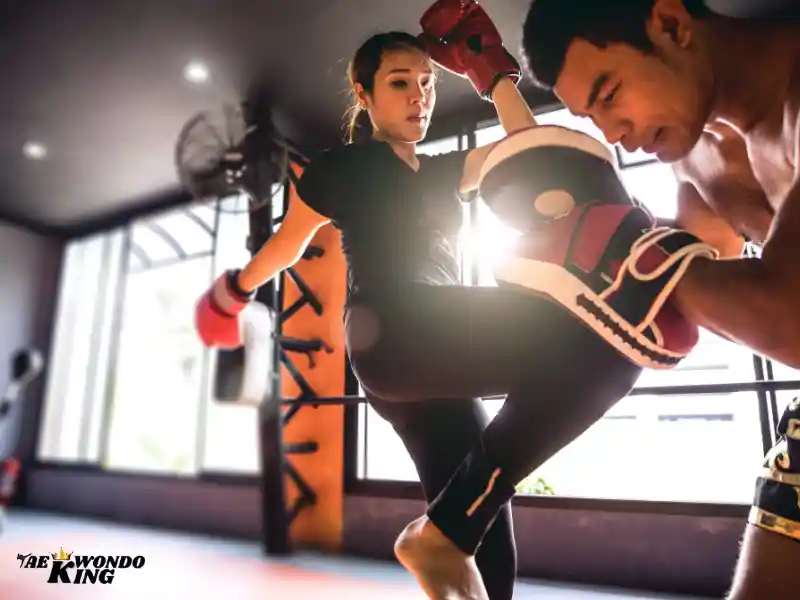
Brazilian Jiu-Jitsu (BJJ): The Groundbreaking Martial Art Revolutionizing Combat
Brazilian Jiu-Jitsu (BJJ), often referred to as the “gentle art,” is a ground-focused martial art that has revolutionized the world of combat sports. Developed in the early 20th century by the Gracie family in Brazil, BJJ has become synonymous with effective ground fighting, submission holds, and positional dominance. The art’s name reflects its origins and evolution from traditional Japanese Jiu-Jitsu, adapting techniques to emphasize leverage, technique, and the strategic use of body weight.
Tracing the Roots of Brazilian Jiu-Jitsu Through its Evolutionary History
The history of Brazilian Jiu-Jitsu is a testament to innovation and adaptation. The Gracie family, particularly Helio and Carlos Gracie, refined and expanded the art, testing its effectiveness through challenge matches and the creation of the Ultimate Fighting Championship (UFC). BJJ gained international recognition as practitioners showcased its effectiveness against larger opponents using leverage and ground control. The sport’s evolution has been marked by a constant pursuit of technical refinement, resulting in a martial art that focuses on the intricate dynamics of ground combat, submissions, and positional strategy.
Why Brazilian Jiu-Jitsu Stands as a Formidable and Dangerous Martial Art Worldwide
Brazilian Jiu-Jitsu’s reputation as one of the most dangerous martial arts stems from its unparalleled effectiveness in ground combat. BJJ practitioners are trained to leverage positioning, joint locks, and chokeholds to submit opponents, irrespective of size or strength differentials. The sport’s emphasis on live sparring, or “rolling,” allows practitioners to pressure-test their skills against resisting opponents, honing their ability to control and submit adversaries in real-world situations. BJJ’s seamless integration into mixed martial arts (MMA) and its global appeal highlight its potency as a dangerous and practical martial art, earning it a revered status among combat sports enthusiasts worldwide.
1. Krav Maga
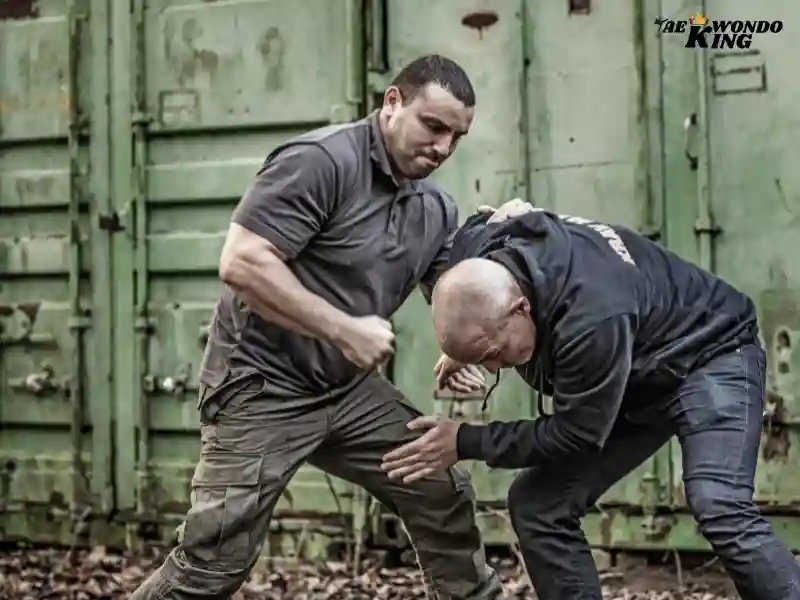
Krav Maga: The Cutting-Edge Martial Art for Real-World Self-Defense
Krav Maga, often hailed as the world’s most effective self-defense system, is a cutting-edge martial art developed in Israel. Born out of necessity and practicality, Krav Maga’s primary focus is on real-world self-defense scenarios. Originating in the 1930s and evolving through the Israeli military, the art quickly gained international recognition for its efficiency and adaptability. Krav Maga’s philosophy centers on instinctive movements and simultaneous defensive and offensive maneuvers, making it a go-to choice for law enforcement, military personnel, and civilians seeking practical self-defense skills.
Exploring the Evolution of Krav Maga Through Its Historical Roots
The history of Krav Maga is deeply rooted in the challenges faced by Jewish communities in Eastern Europe during times of political unrest. Imi Lichtenfeld, the founder of Krav Maga, developed the system as a response to anti-Semitic violence. Evolving in the crucible of conflict, Krav Maga became the hand-to-hand combat system for the Israeli military. Its history is marked by continuous refinement and adaptation, blending elements of boxing, wrestling, judo, and street-fighting techniques. Krav Maga’s journey from a wartime necessity to a globally recognized self-defense system reflects its pragmatic and effective nature.
Why Krav Maga Stands Out as the Most Dangerous Martial Art Worldwide
Krav Maga earns its reputation as the most dangerous martial art due to its no-nonsense approach and focus on neutralizing threats quickly and efficiently. Unlike traditional martial arts that often involve complex techniques, Krav Maga prioritizes simplicity and directness. Practitioners are trained to respond instinctively to a variety of attacks, emphasizing preemptive strikes and practical defenses against armed assailants.
Its applications in real-world scenarios, combined with its rapid, intense training programs, make Krav Maga a formidable and efficient martial art for personal safety. The art’s global recognition and incorporation into military and law enforcement training further underscore Krav Maga’s status as the epitome of dangerous and practical self-defense.
Deadliest Martial Arts in The World
The term “Deadliest Martial Arts in the World” conjures images of combat systems designed for maximum efficiency and lethality. Martial arts such as Krav Maga, Brazilian Jiu-Jitsu, Muay Thai, and Eskrima/Kali/Arnis are often considered among the deadliest due to their real-world applicability, emphasis on practical techniques, and adaptability in various combat scenarios.
These arts prioritize effectiveness over tradition, equipping practitioners with skills that seamlessly transition from the training mat to real-life self-defense situations. The label “deadliest” reflects the potency and efficiency of these martial arts in neutralizing threats, making them highly sought after for personal protection and often integrated into military and law enforcement training worldwide.
What is the most dangerous fighting sport?
Determining the most dangerous fighting sport involves assessing factors such as practicality, adaptability, and the potential for serious injury. Mixed Martial Arts (MMA) consistently ranks as one of the most dangerous fighting sports due to its unrestricted combination of striking and grappling techniques, allowing practitioners to utilize a wide array of martial arts styles.
The dynamic nature of MMA competitions, with minimal protective gear and a focus on realistic combat scenarios, contributes to its reputation for intense and often brutal confrontations. While other combat sports like Muay Thai, Brazilian Jiu-Jitsu, and Krav Maga are highly effective in their own right, the unregulated nature of MMA, coupled with the diverse skill set required, positions it as a top contender for the title of the most dangerous fighting sport in the world.
What is the strongest Martial Art in history?
Determining the strongest martial art in history is a subjective task, considering the diversity of fighting styles and their unique strengths. However, Brazilian Jiu-Jitsu (BJJ) often stands out as one of the strongest martial arts, renowned for its practicality and adaptability. BJJ’s emphasis on ground fighting, leverage, and submission allows practitioners to neutralize larger opponents, making it a formidable martial art.
Additionally, Krav Maga, developed for the Israeli military, is recognized for its real-world effectiveness and focus on quick, efficient, and potentially lethal techniques. While the concept of the “strongest” martial art may vary based on individual preferences and contexts, BJJ and Krav Maga consistently emerge as top contenders in the discussion of the most robust and practical martial arts in history.
Top 10 Martial Arts in The World
Creating a comprehensive list of the top 10 martial arts in the world involves recognizing diverse combat disciplines renowned for their efficacy and cultural influence. Securing the number one spot is Brazilian Jiu-Jitsu (BJJ), celebrated for its ground-fighting techniques and strategic submissions. Following closely is Muay Thai, hailed as the “Art of Eight Limbs” for its powerful strikes and clinch work. Krav Maga, designed for practical self-defense, takes the third spot, emphasizing real-world scenarios.
The list continues with Karate, revered for its disciplined striking techniques, and Taekwondo, known for its dynamic kicks. Judo secures its place for throws and grappling expertise, while Kung Fu represents various Chinese martial arts. Boxing’s precision in striking earns it a spot, Aikido is recognized for its fluid movements, and the all-encompassing Mixed Martial Arts (MMA) makes the list as a fusion of diverse martial arts in competitive formats. This curated compilation reflects the global impact and significance of each martial art on the list, showcasing their unique strengths and philosophies.
See the latest Top-Rated Adjustable Dumbbells Set Price Today Used by Champions.

World No. 1 Martial Art in 2025
In Today, Brazilian Jiu-Jitsu (BJJ) stands tall as the world’s premier martial art, securing the coveted position of World No. 1. Renowned for its ground-fighting mastery and strategic submissions, BJJ has become a global phenomenon, attracting practitioners for its effectiveness and adaptability. With roots in ancient Japanese martial arts, BJJ has evolved into a contemporary discipline, dominating both traditional competitions and the modern arena of mixed martial arts (MMA). Its universal acclaim as the top martial art in today reflects not only its technical brilliance but also its impact on self-defense, sport, and the broader martial arts landscape.
In conclusion,
These top 10 dangerous martial arts in the world showcase a diverse range of techniques, philosophies, and origins. Whether developed for military use, adapted for self-defense, or refined for sports, these martial arts have earned their reputation for lethality and effectiveness in various combat scenarios.
FAQs
Martial arts are an ancient form of combat that has been around for centuries. It has evolved and become an important part of many cultures. There are many different martial arts styles, each with its own set of techniques and strategies. While it is difficult to name one as the “king of martial arts,” some are widely accepted as being among the most effective for self-defense and combat. Examples include Jeet Kune Do, Muay Thai, Brazilian Jiu-Jitsu, Judo, and Karate. Finding the right martial art for you will depend on your preferences and goals. Regardless of which style you choose, it is important to practice regularly and to be mindful of the risks of physical combat.
Determining whether Karate or Kung Fu is better hinges on individual preferences and goals. Karate, originating in Okinawa, excels in straightforward striking techniques, emphasizing power and precision. On the other hand, Kung Fu, an umbrella term encompassing diverse Chinese martial arts, prioritizes fluid movements, acrobatics, and a broader range of techniques. The choice between Karate and Kung Fu depends on personal preferences, as some may prefer Karate’s directness while others appreciate Kung Fu’s versatility. Ultimately, both martial arts offer unique benefits, making the decision contingent on an individual’s objectives and the specific style and school of each discipline.
The quest for the top 10 strongest martial arts delves into disciplines revered for their power, effectiveness, and global influence. Brazilian Jiu-Jitsu (BJJ) secures a prime position with its ground-fighting mastery and strategic submissions. Muay Thai, known as the “Art of Eight Limbs,” is celebrated for its powerful strikes. Krav Maga’s practical self-defense techniques place it high on the list. Karate, Taekwondo, Judo, Kung Fu, Boxing, Aikido, and MMA complete the lineup, each contributing unique strengths. This carefully curated list reflects the potency and versatility of martial arts globally, showcasing disciplines that excel in various aspects of combat and self-defense.
The martial arts world is changing all the time, with new styles developing and older ones still popular. In 2025, the top ten martial arts are a mix of styles from all over the world, including Muay Thai, Jiu Jitsu, Judo, Karate, Taekwondo, Capoeira, Boxing, Krav Maga, Aikido, and Wing Chun. Each of these styles offers its advantages, whether it’s for self-defense, fitness, or competing. When it comes to selecting the right martial art for you, be sure to do your research and find one that suits your goals and lifestyle.
The intrigue surrounding the top 10 forbidden martial arts centers on disciplines shrouded in mystery, secrecy, and often restricted knowledge. These martial arts, deemed forbidden due to their lethal techniques or clandestine nature, include Dim Mak, an ancient Chinese art targeting pressure points. Ninjutsu, the stealthy art of the ninja, and Silat, a Southeast Asian system known for its deadly strikes, make the list. Other forbidden arts include Bokator, Hwa Rang Do, Eskrima/Kali/Arnis, Systema, Pencak Silat, and Vajra Mushti. This collection unveils martial arts that, due to their potent and sometimes perilous nature, have gained notoriety as forbidden knowledge in various cultural contexts.
The most effective martial art for a real fight varies depending on the situation. Taekwondo uses kicks to keep an opponent at a distance, while Brazilian Jiu-Jitsu focuses on ground fighting and control. The best martial art to use will depend on the individual’s skill level and the specific situation.
It is important to consider the context of a fight and the skill level of the participants when trying to determine the most effective martial art in a real fight. Different martial arts have their strengths and weaknesses, so using the right style for the right situation can be key to success. Combining techniques from multiple styles may be the best approach.
See the latest Top-Rated Adjustable Dumbbells Set Price Today Used by Champions.


Founder, Owner, and CEO of TaekwondoKing.
He is one of the top 100 martial artists in the World and among the top 20 referees in Bangladesh.
Ehatasamul Alom is an esteemed Kukkiwon Certified Taekwondo 3rd Dan Black Belt with over 15 years of experience in this dynamic martial art. Born in Rajshahi, Bangladesh, Ehatasamul’s journey with Taekwondo began at the tender age of seven. His passion led him to compete at national and international levels, where he has bagged numerous awards and honors. He is also a member of the Taekwondo National Referee Panel.
With a Bachelor’s degree in Sports Science from the prestigious Rajshahi University, Ehatasamul has a deep understanding of the technical and scientific aspects of martial arts and some other martial arts.
In 2022, Ehatasamul created the “TaekwondoKing.com” to share his knowledge, Free Resources, Values, and Real experiences. His articles focus on Taekwondo training techniques, competition strategies, Sport Products Reviews, and the art’s rich history and philosophy. He also writes about the importance of mental fortitude and discipline, key aspects of his teaching philosophy. He has already launched many sports, Taekwondo, and health-related Free online tools. His goal is to inspire both beginners and seasoned practitioners worldwide through insightful and engaging content.
If you need any help, contact Ehatasamul Alom at any time.

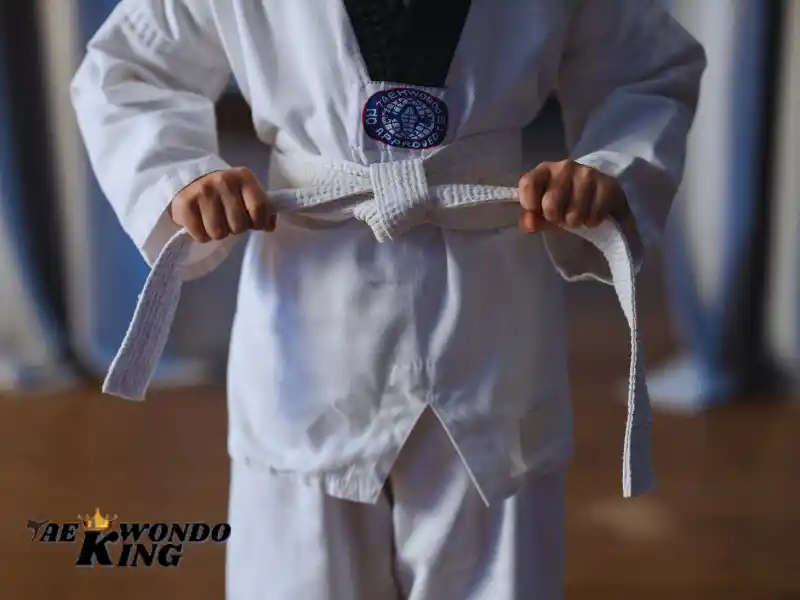
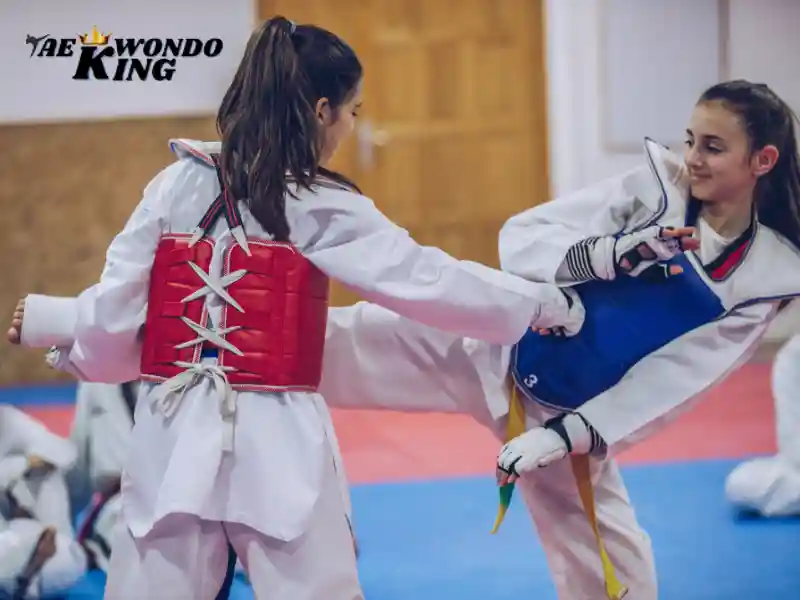
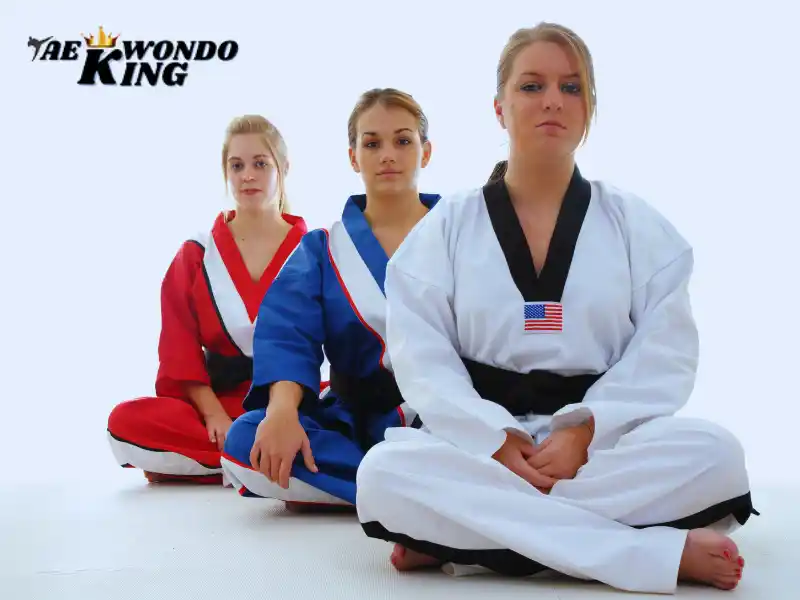
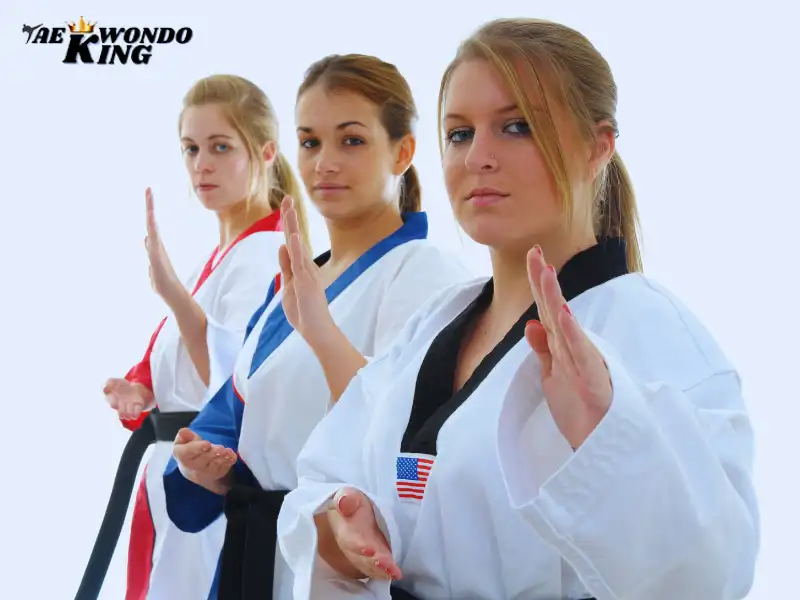
Amazing content—very informative! Thanks for sharing. I read many of your blog posts, cool, your blog is very good.